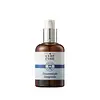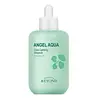What's inside
What's inside
 Key Ingredients
Key Ingredients

 Benefits
Benefits

 Concerns
Concerns

No concerns
 Ingredients Side-by-side
Ingredients Side-by-side

Water
Skin ConditioningGlycerin
HumectantPentylene Glycol
Skin ConditioningNiacinamide
SmoothingCentella Asiatica Extract
CleansingN-Palmitoyl Serinol
Skin ProtectingBifida Ferment Lysate
Skin ConditioningAcetyl Glucosamine
Skin ConditioningPhytosterols
Skin ConditioningCeramide NP
Skin ConditioningSodium Hyaluronate
HumectantSialyllactose
Skin ConditioningAllantoin
Skin ConditioningPanthenol
Skin ConditioningHypericum Perforatum Flower Extract
Skin ConditioningAdenosine
Skin ConditioningResveratrol
AntioxidantHeptasodium Hexacarboxymethyl Dipeptide-12
Skin ConditioningGlyceryl Acrylate/Acrylic Acid Copolymer
HumectantPolyglyceryl-10 Distearate
EmulsifyingGlyceryl Stearate
EmollientCaprylic/Capric Triglyceride
MaskingSorbitan Stearate
EmulsifyingCarbomer
Emulsion StabilisingStearic Acid
CleansingGlyceryl Caprylate
Emollient1,2-Hexanediol
Skin ConditioningWater, Glycerin, Pentylene Glycol, Niacinamide, Centella Asiatica Extract, N-Palmitoyl Serinol, Bifida Ferment Lysate, Acetyl Glucosamine, Phytosterols, Ceramide NP, Sodium Hyaluronate, Sialyllactose, Allantoin, Panthenol, Hypericum Perforatum Flower Extract, Adenosine, Resveratrol, Heptasodium Hexacarboxymethyl Dipeptide-12, Glyceryl Acrylate/Acrylic Acid Copolymer, Polyglyceryl-10 Distearate, Glyceryl Stearate, Caprylic/Capric Triglyceride, Sorbitan Stearate, Carbomer, Stearic Acid, Glyceryl Caprylate, 1,2-Hexanediol
Water
Skin ConditioningGlycerin
HumectantDipropylene Glycol
HumectantTriethylhexanoin
MaskingNiacinamide
SmoothingPentaerythrityl Tetraethylhexanoate
Emollient1,2-Hexanediol
Skin ConditioningPanthenol
Skin ConditioningTrehalose
HumectantBambusa Arundinacea Juice
AbrasiveBetula Platyphylla Japonica Juice
Skin ConditioningVitis Vinifera Vine Sap
Skin ConditioningTrichosanthes Kirilowii Root Extract
Skin ProtectingArtemisia Annua Extract
MaskingAzadirachta Indica Leaf Extract
Skin ConditioningCamellia Sinensis Leaf Extract
AntimicrobialHydrolyzed Hyaluronic Acid
HumectantSodium Hyaluronate
HumectantAsiaticoside
AntioxidantMadecassic Acid
Skin ConditioningAsiatic Acid
Skin ConditioningAnhydroxylitol
HumectantDipotassium Glycyrrhizate
HumectantXylitol
HumectantGlucose
HumectantSclerotium Gum
Emulsion StabilisingSuccinoglycan
Skin ConditioningBetaine
HumectantXylitylglucoside
HumectantCaprylic/Capric Triglyceride
MaskingAcrylates/C10-30 Alkyl Acrylate Crosspolymer
Emulsion StabilisingPolymethylsilsesquioxane
Methyl Glucose Sesquistearate
EmollientTrisodium EDTA
Tromethamine
BufferingWater, Glycerin, Dipropylene Glycol, Triethylhexanoin, Niacinamide, Pentaerythrityl Tetraethylhexanoate, 1,2-Hexanediol, Panthenol, Trehalose, Bambusa Arundinacea Juice, Betula Platyphylla Japonica Juice, Vitis Vinifera Vine Sap, Trichosanthes Kirilowii Root Extract, Artemisia Annua Extract, Azadirachta Indica Leaf Extract, Camellia Sinensis Leaf Extract, Hydrolyzed Hyaluronic Acid, Sodium Hyaluronate, Asiaticoside, Madecassic Acid, Asiatic Acid, Anhydroxylitol, Dipotassium Glycyrrhizate, Xylitol, Glucose, Sclerotium Gum, Succinoglycan, Betaine, Xylitylglucoside, Caprylic/Capric Triglyceride, Acrylates/C10-30 Alkyl Acrylate Crosspolymer, Polymethylsilsesquioxane, Methyl Glucose Sesquistearate, Trisodium EDTA, Tromethamine
Ingredients Explained
These ingredients are found in both products.
Ingredients higher up in an ingredient list are typically present in a larger amount.
1,2-Hexanediol is a synthetic liquid and another multi-functional powerhouse.
It is a:
- Humectant, drawing moisture into the skin
- Emollient, helping to soften skin
- Solvent, dispersing and stabilizing formulas
- Preservative booster, enhancing the antimicrobial activity of other preservatives
This ingredient is an emollient, solvent, and texture enhancer. It is considered a skin-softener by helping the skin prevent moisture loss.
It helps thicken a product's formula and makes it easier to spread by dissolving clumping compounds.
Caprylic Triglyceride is made by combining glycerin with coconut oil, forming a clear liquid.
While there is an assumption Caprylic Triglyceride can clog pores due to it being derived from coconut oil, there is no research supporting this.
Learn more about Caprylic/Capric TriglycerideGlycerin is already naturally found in your skin. It helps moisturize and protect your skin.
A study from 2016 found glycerin to be more effective as a humectant than AHAs and hyaluronic acid.
As a humectant, it helps the skin stay hydrated by pulling moisture to your skin. The low molecular weight of glycerin allows it to pull moisture into the deeper layers of your skin.
Hydrated skin improves your skin barrier; Your skin barrier helps protect against irritants and bacteria.
Glycerin has also been found to have antimicrobial and antiviral properties. Due to these properties, glycerin is often used in wound and burn treatments.
In cosmetics, glycerin is usually derived from plants such as soybean or palm. However, it can also be sourced from animals, such as tallow or animal fat.
This ingredient is organic, colorless, odorless, and non-toxic.
Glycerin is the name for this ingredient in American English. British English uses Glycerol/Glycerine.
Learn more about GlycerinNiacinamide is a multitasking form of vitamin B3 that strengthens the skin barrier, reduces pores and dark spots, regulates oil, and improves signs of aging.
And the best part? It's gentle and well-tolerated by most skin types, including sensitive and reactive skin.
You might have heard of "niacin flush", or the reddening of skin that causes itchiness. Niacinamide has not been found to cause this.
In very rare cases, some individuals may not be able to tolerate niacinamide at all or experience an allergic reaction to it.
If you are experiencing flaking, irritation, and dryness with this ingredient, be sure to double check all your products as this ingredient can be found in all categories of skincare.
When incorporating niacinamide into your routine, look out for concentration amounts. Typically, 5% niacinamide provides benefits such as fading dark spots. However, if you have sensitive skin, it is better to begin with a smaller concentration.
When you apply niacinamide to your skin, your body converts it into nicotinamide adenine dinucleotide (NAD). NAD is an essential coenzyme that is already found in your cells as "fuel" and powers countless biological processes.
In your skin, NAD helps repair cell damage, produce new healthy cells, support collagen production, strengthen the skin barrier, and fight environmental stressors (like UV and pollution).
Our natural NAD levels start to decline with age, leading to slower skin repair, visible aging, and a weaker skin barrier. By providing your skin niacinamide, you're recharging your skin's NAD levels. This leads to stronger, healthier, and younger looking skin.
Another name for vitamin B3 is nicotinamide. This vitamin is water-soluble and our bodies don't store it. We obtain Vitamin B3 from either food or skincare. Meat, fish, wheat, yeast, and leafy greens contain vitamin B3.
The type of niacinamide used in skincare is synthetically created.
Learn more about NiacinamidePanthenol is a common ingredient that helps hydrate and soothe the skin. It is found naturally in our skin and hair.
There are two forms of panthenol: D and L.
D-panthenol is also known as dexpanthenol. Most cosmetics use dexpanthenol or a mixture of D and L-panthenol.
Panthenol is famous due to its ability to go deeper into the skin's layers. Using this ingredient has numerous pros (and no cons):
Like hyaluronic acid, panthenol is a humectant. Humectants are able to bind and hold large amounts of water to keep skin hydrated.
This ingredient works well for wound healing. It works by increasing tissue in the wound and helps close open wounds.
Once oxidized, panthenol converts to pantothenic acid. Panthothenic acid is found in all living cells.
This ingredient is also referred to as pro-vitamin B5.
Learn more about PanthenolSodium Hyaluronate is hyaluronic acid's salt form. It is commonly derived from the sodium salt of hyaluronic acid.
Like hyaluronic acid, it is great at holding water and acts as a humectant. This makes it a great skin hydrating ingredient.
Sodium Hyaluronate is naturally occurring in our bodies and is mostly found in eye fluid and joints.
These are some other common types of Hyaluronic Acid:
Learn more about Sodium HyaluronateWater. It's the most common cosmetic ingredient of all. You'll usually see it at the top of ingredient lists, meaning that it makes up the largest part of the product.
So why is it so popular? Water most often acts as a solvent - this means that it helps dissolve other ingredients into the formulation.
You'll also recognize water as that liquid we all need to stay alive. If you see this, drink a glass of water. Stay hydrated!
Learn more about Water